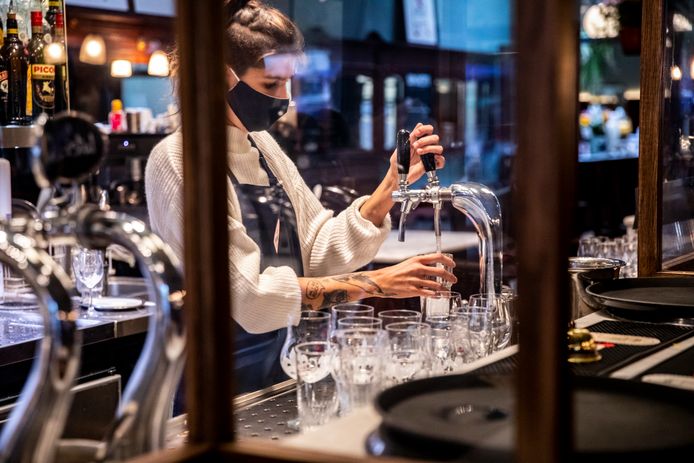On Saturday, several relaxations will be made as part of the "outdoor plan" including the reopening of terraces and the launch of outdoor events, but the government has made clear that it is too early to consider indoor relaxations.
The reopening of the indoor areas of the hospitality industry will probably be discussed during the Consultative Committee on Tuesday, and although Flemish Minister-President Jan Jambon said it would be difficult to give an exact date, he added that June seems realistic, echoing earlier comments from Interior Affairs Minister Annelies Verlinden.
According to Verlinden, the full reopening of the hospitality sector would be possible because of vaccinations, however, not all people living in Belgium will have received a first dose by then.
Related News
- 'Not a car you can just restart': Brussels bars will open step by step
- One in two people in Flanders should be vaccinated by Whit Monday, says Beke
This means measures will have to be implemented to minimise the spread of the coronavirus indoors.
Peter Wouters of the ventilation task force announced on Friday during a Crisis Centre press conference that a series of recommendations have been made which should be followed to decrease the risk of contamination, as "ventilation alone isn't enough."
Wouters highlighted that it was important to keep the concentration of particles, which we spread when we exhale, as low as possible, which is "no problem when you are outside and if sufficient distance is maintained," but indoors, this can be tricky.
Firstly, ventilation, or the influx of fresh air from outside, can help keep the particle concentration low.
Each person sitting quietly needs at least 40 cubic metres of fresh (outside) air per hour. Looking at the concentration of CO2 or carbon dioxide in the air will show whether the air is sufficiently fresh.
"In outdoor air, this is about 400 ppm (400 parts per million). Inside, in a room where people are present, the concentration is higher because people exhale CO2. Air in which the concentration of CO2 is higher than 900 ppm is considered unhealthy," Wouters explained.
Therefore, the Task Force recommends that the concentration of CO2 in indoor spaces should not exceed 900 ppm. In practice, it is not easy to measure the amount of fresh air in a room, but there are CO2 meters that can help measure this.
Wouters emphasised that, when the CO2 concentration exceeds this level, measures must be taken.
These include opening doors and windows and reducing the number of people in one room.
According to the task force, per square metre of a (fully) opened window, you can share a room with four people, and per square metre of an open door, you can be indoors with six people. This could help employers, but also businesses in the hospitality sector calculate how many people can be in one room at the same time.
Another possibility, according to Wouters, is air purification and mechanical ventilation, which also reduces the number of contaminated particles in the indoor space, however, the advice on air purification is still being worked on by the task force.
Plexiglas screens, which were at the centre of a miscommunication between the government and the hospitality sector on Friday, can stop direct contamination via small and large drops, but cannot solve the issue of particles spreading.
"Aerosols are droplets that remain floating in the air - for one to three hours - and they can fill up a room in the same way that cigarette smoke does. A screen cannot stop that. That's why indoor ventilation is so important," according to virologist Steven Van Gucht.
Wouters said that, if concentrations are not too high, "one can assume that the situation is okay," but warned that this does not mean that contamination is not possible. "There is never 100% certainty," he said.

